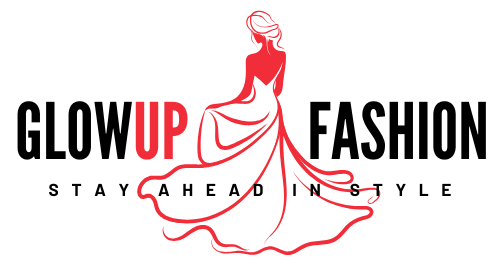

Fashion illustration is a timeless art form that bridges the gap between creativity and fashion design. Whether you’re a budding artist or an experienced professional, mastering this skill can elevate your designs to the next level. This guide provides practical fashion illustration tips to help refine your technique and inspire your artistic journey.
The Basics of Fashion Illustration
1. Understanding Proportions in Fashion Illustration
Mastering proportions is essential for creating accurate and appealing sketches.
- Human Anatomy and Proportions: Study human anatomy to ensure your figures are proportional. Start with the standard eight-head rule, dividing the body into segments for balance.
- Exaggeration in Fashion Sketches: Fashion sketches often feature elongated legs and necks for elegance. Learn to exaggerate proportionally to enhance the artistic appeal.
- Practicing with Guidelines: Use templates or create your guidelines for consistent proportions in every sketch.
2. Selecting the Right Tools for Fashion Illustration
The right tools can significantly impact the quality of your illustrations.
- Sketching Supplies: Invest in quality pencils, erasers, and sketch pads for precise sketches.
- Coloring Mediums: Experiment with watercolors, markers, or colored pencils to bring your designs to life.
- Digital Tools: Explore digital illustration software for creating detailed and editable designs.
3. Learning the Fashion Silhouette Basics
Understanding silhouettes is vital in fashion illustration.
- Types of Silhouettes: Familiarize yourself with common silhouettes such as A-line, sheath, and ball gown styles.
- Practicing Silhouette Drawing: Start by sketching basic shapes and gradually refine them into detailed garments.
- Incorporating Trends: Stay updated on fashion trends to create modern and relevant silhouettes.
Techniques to Enhance Your Fashion Illustration Skills
4. Mastering Fabric Textures
Representing fabric textures effectively adds depth to your designs.
- Observing Real Fabrics: Analyze fabrics like silk, denim, or velvet to understand their flow and texture.
- Shading Techniques: Use shading to replicate light and shadow, emphasizing fabric folds and creases.
- Layering Colors: Experiment with layering colors to achieve realistic fabric effects.
5. Adding Movement to Your Illustrations
Dynamic sketches bring energy and life to your designs.
- Gesture Drawing: Practice quick gesture sketches to capture movement and posture.
- Fluid Lines: Use curved lines to depict the natural flow of fabric and body motion.
- Dynamic Poses: Experiment with active poses to showcase garments in action.
6. Perfecting Facial Features and Hairstyles
Details like faces and hair add personality to your illustrations.
- Simplifying Facial Features: Focus on basic facial features like eyes, nose, and lips, keeping them minimalistic.
- Hairstyle Variations: Practice drawing diverse hairstyles to complement your designs.
- Adding Expressions: Use subtle expressions to convey mood or style.
Creative Approaches to Fashion Illustration
7. Experimenting with Colors and Patterns
Colors and patterns bring uniqueness to your illustrations.
- Color Theory Basics: Learn color theory to create harmonious designs.
- Incorporating Patterns: Add patterns like florals or geometric shapes to enhance garment details.
- Testing Color Schemes: Experiment with bold and neutral palettes to find the perfect match.
8. Exploring Different Fashion Illustration Styles
Diversifying your style can make your portfolio versatile.
- Realistic Style: Focus on intricate details and lifelike representations.
- Abstract Style: Use abstract elements for a modern and creative twist.
- Minimalist Style: Emphasize simplicity with clean lines and basic shapes.
9. Creating a Fashion Illustration Portfolio
A strong portfolio showcases your talent and versatility.
- Organizing Your Work: Arrange illustrations by theme or style for a cohesive presentation.
- Highlighting Your Best Designs: Include your most impressive pieces to leave a lasting impression.
- Keeping it Updated: Regularly update your portfolio with fresh and relevant designs.
Advanced Tips for Professional Fashion Illustrators
10. Collaborating with Fashion Designers
Collaborations can provide valuable insights and opportunities.
- Understanding Designer Needs: Communicate with designers to align your illustrations with their vision.
- Presenting Your Work: Use professional presentation techniques to showcase your ideas effectively.
- Building Long-Term Relationships: Maintain connections to create ongoing opportunities.
11. Staying Inspired in Fashion Illustration
Inspiration is key to staying creative and motivated.
- Exploring Art and Culture: Draw inspiration from art, history, and global cultures.
- Following Industry Leaders: Keep up with renowned fashion illustrators and their work.
- Participating in Workshops: Attend workshops or webinars to learn new techniques and network.
12. Embracing Feedback and Continuous Learning
Improvement comes from learning and adapting.
- Seeking Constructive Criticism: Share your work with peers or mentors for feedback.
- Learning New Techniques: Stay updated with evolving trends and techniques in fashion illustration.
- Practicing Consistently: Dedicate time regularly to refine your skills and explore new ideas.
Conclusion
Fashion illustration is an exciting blend of art and design that demands creativity and precision. By mastering proportions, experimenting with techniques, and staying inspired, you can transform your sketches into captivating works of art. Use these tips as a foundation to develop your unique style and make your mark in the fashion industry.






